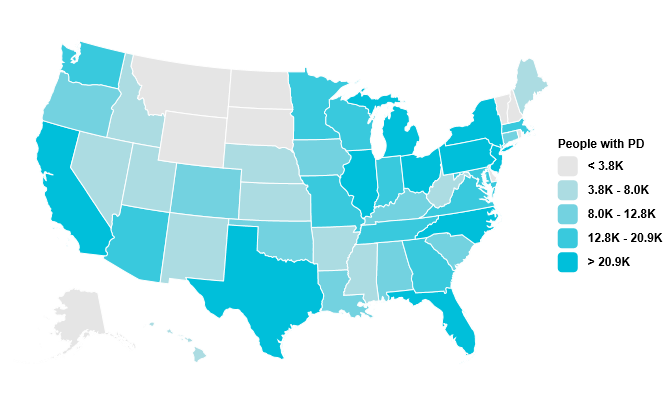More Than 1 Million Cases of Parkinson’s Predicted in the US by 2030, Study Reports

Approximately 1.2 million people in the United States are predicted to have Parkinson’s disease by the year 2030, according to the results of a large-scale study.
This represents a projected increase by about 1.8 times in Parkinson’s prevalence since 2010, highlighting the need for optimized care and treatment strategies for this patient population to diminish the burden of care on caregivers and ease the economical burden on the healthcare system.
The study, “Prevalence of Parkinson’s disease across North America,” was recently published in npj Parkinson’s Disease.
The Parkinson’s Prevalence Project was launched in 2014 by the Parkinson’s Foundation to determine an accurate estimate of the number of people affected by the disease and gain a better understanding of the progression of Parkinson’s prevalence across North America. This knowledge is crucial for proper recognition of the burden that Parkinson’s might represent for society in the near future, allowing for long-term healthcare planning.
Analyzing the prevalence of the disease across different geographical locations could also provide new clues on who could be more susceptible to Parkinson’s, and why.
To accurately estimate the prevalence of Parkinson’s disease and identify possible geographic variations across North America, researchers combined data collected from five large-scale studies covering four different regions across the continent. They then compared them with prevalence estimates based on nationwide U.S. Medicare data.
Discuss the latest research in the Parkinson’s News Today forums!
All individuals ages 45 and older who participated in the five cohort studies in California, Minnesota, Hawaii, and Ontario, Canada, were included in the calculations.
The overall estimated prevalence of Parkinson’s disease in the U.S. population, according to the 2010 census, was 572 per 100,000. These estimates were higher in men than in women (667 versus 488), and values rose with age in both genders.
Data indicated that in 2010 about 680,000 individuals in the U.S. ages 45 and older had been diagnosed with the disease. Given the projected future growth of the population, the researchers predicted this number will rise to 930,000 cases in 2020, and to 1,238,000 by 2030.
Geographical analysis of the data showed that, for all regions except Olmsted County, Minnesota, and Northern California, the estimated numbers were in accordance with those retrieved from the Medicare database. For Olmsted County, 14-27% more cases of Parkinson’s were identified in the study than in the Medicare data. In Northern California, the study indicated 30% more Parkinson’s cases than in the Medicare data.
This finding suggests “regional variation … deserves to be studied” so researchers can understand if variations result from “differences in susceptibility to the disease or in access to or utilization of healthcare services,” the authors wrote.
They believe that the projected rise in Parkinson’s prevalence underscores the “growing importance of optimizing care and treatment” for this population. This will help with “lessening the burden of care on the caregivers, and easing the strain on health and elder care systems.”






